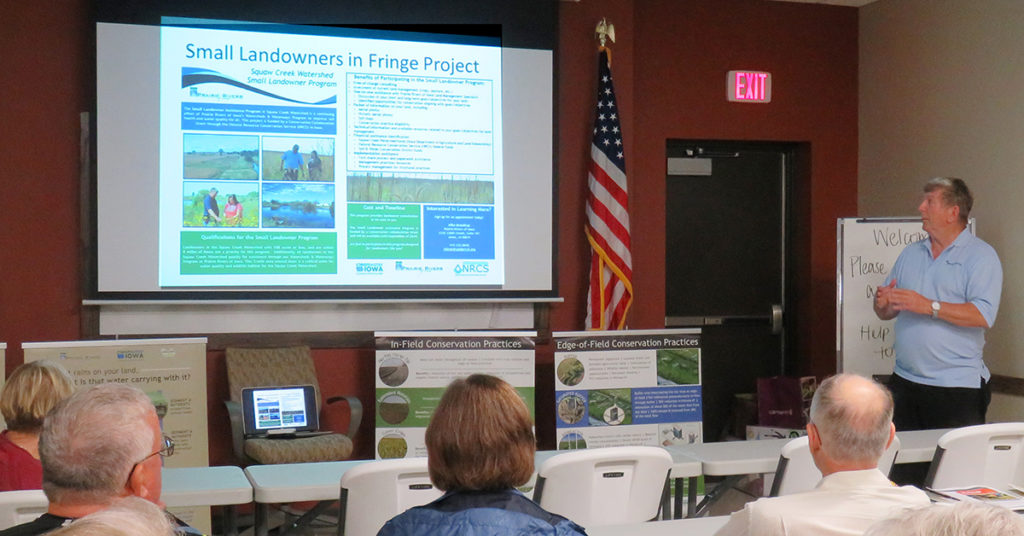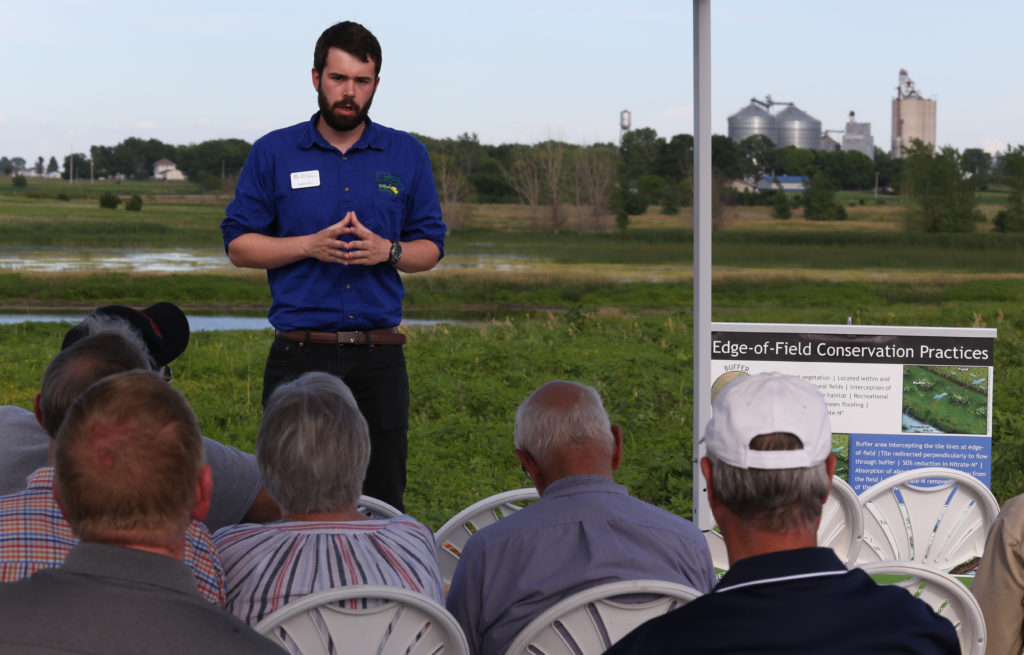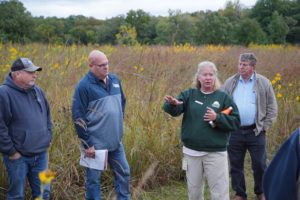Prairie Rivers of Iowa Urban Fringe Small Landowner Project
Prairie Rivers of Iowa completed a project to support the Iowa Nutrient Reduction Strategy by providing education and technical assistance to a group of rural landowners near the city limits of Ames that, owing to the small size of their holdings or non-traditional nature of their operations, are sometimes overlooked.
Through the project, funded by a grant from the Iowa Natural Resource and Conservation Service (NRCS), we were able to increase awareness of conservation practices by hosting five field days and share information at least ten other gatherings. Technical assistance was provided one-on-one with 47 landowners helping assess resource concerns and conservation opportunities on 2,119 acres of land.
Through the project, funded by a grant from NRCS, we were able to increase awareness of conservation practices by hosting five field days and share information at least ten other gatherings. Technical assistance was provided one-on-one with 47 landowners helping assess resource concerns and conservation opportunities on 2,119 acres of land.
The project was part of a larger nutrient reduction effort in the Squaw Creek watershed but focused on landowners of 10-100 acres within 5 miles of Ames city limits. Some landowners had a farming background and some did not. Some owners of farmland were involved in crop production and others rented out the land. In addition to row crop production, the land included pasture, forest, natural areas and specialty crops.
Compared to large-scale corn and soybean farmers, we assumed that this group would:
1. Be more receptive to conservation practices that take land out of production.
2. Be less familiar with the NRCS and with Farm Bill conservation programs.
3. Adopt conservation practices at higher rates that can support the Iowa Nutrient Reduction Strategy.
Assumption one is likely true. Many of the people we spoke to had a strong land ethic and were interested in maintaining part of their property as prairie, woodland or wetland. For most, cost-share was not the deciding factor in their land management decisions. Focusing on these landowners could have outsized benefits for initiatives concerned with wildlife habitat or riparian corridors.
Assumption two appears to be false. Eighty-three percent of the 18 respondents in our post-participation evaluation had previously worked with NRCS for conservation projects on their land and all who were eligible had some land enrolled in the Conservation Resource Program (CRP).
Assumption three appears to be false. While we documented one bioreactor and 200 acres of cover crops among urban fringe landowners of 10 – 100 acres, this represents a small reduction in nitrogen and phosphorus compared to the 1529 acres of cover crops and 2300 acres we helped install in the larger watershed in 2018. We assisted with management, enrollment or re-enrollment of 580 acres of CRP. However, only 264 acres were in the watershed. While our nutrient reduction goals cannot be met if existing conservation lands are degraded or put back into production, only a net increase in CRP acres will lead to measurable nutrient reductions relative to the baseline.
The most common conservation program discussed was CRP. Land retirement is a key practice in the nutrient reduction strategy, reducing nitrogen load by 85% and phosphorus load by 75%. Rental payments are more important than planting costs for most of the people we spoke with. We provided technical assistance for landowners interested in enrolling, re-enrolling, or managing 580 acres of CRP, 264 acres of which was within our project area. Other practices discussed with landowners were tiling, cover crops, native seeding, stream bank erosion, grazing, riparian forest management, windbreaks, pollinator planting, water runoff diversion and drainage.



